Last Updated on 01/03/2021 by Desmond
A mistake happened when tea spread overseas from its birthplace China. At that time, red tea was the primary type. The leaves are dark because it belongs to completed-fermentation tea, so the westerner translated it as black tea. In fact, there is one more type of black tea with an older history; people called it Dark Tea at a later time.
CONTENT
What Is Dark Tea
Dark tea belongs to post-fermentation teas. Most of them sell in a tea cake or brick style, which need a small knife to help taking tea. Dark tea can be stored for a very long time, even more than dozens of years. During the period, the microorganism and leaves will interact and make dark tea flavor keep changing and improving. This post-fermenting process is called aging.
Nowadays, in China, dark tea got lots of fans for its unique flavor, and maybe it is the most popular tea. Unlike other tea types, dark tea tastes without any vegetal smell and astringency; you may not think of it as a tea when you first try. The brews show an amber color, with a little sticky feeling, mellow and smooth, and a unique sweetness; people called it “aging flavor.” The wonderful taste will make you addicted and can’t stop drinking.
Except for the flavor, people believe that the dark tea benefits will grow by a long time aging. Just like the aged wine, the older, the more expensive, dark tea is also given a collection and investment value, getting more and more popular.
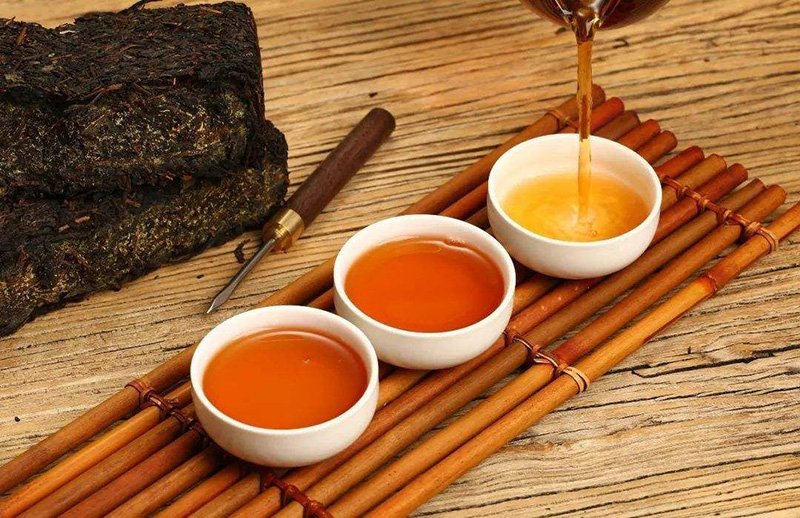
Dark Tea History
Dark tea is meaningful in Chinese history.
Green tea birthed the earliest. It was mainly produced in Sichuan(west Chian) and Hunan(central) and sell to the other regions. The steaming green tea was the primary one, which was similar to the Japenese tea. Even though they’ve been fixated and the leaves were stopped from fermenting. These green finally fermented again because of a bad environment, especially the hot and wet weather, and the microorganism effect during the long journey.
At first, people thought these green tea had gone moldy; they looked so dark. Just like the story about who was the first one to eat crab, till some tea marchers reluctant to throw them up and brewed them, they found it tastes awesome. They fed back this case to tea masters; after over and over research and improvement, tea masters developed the original dark tea processing methods.
Another view is, people in west China had been drinking dark tea for a long time. The local people compressed the teas into a cake for better storage. Of course, like any other dark tea origin story and its magical curative effect, it had no written records.
The rise of dark tea was in the Tang Dynasty(618-907.) According to the historical records, Princess Wencheng brought tea, silk, and ink brush to Tibet in a political marriage. Tibetan is a nomad. They took beef, mutton, and milk as a daily diet, which is rich in fat and calorie, so they generally got a digestive problem. The tea supplied cellulose in their diet and did a great help on the digestive problem.
The worse environment of Tibet is not suitable for tea planting, so tea wasn’t produced there. All the tea were import from China inland, Tibetan exchanged tea with horse and sheep; it was called Tea-horse Trading. Gradually, a fixed trading route was developed, which was called the Ancient Tea Horse Road. Sichuan was one of the starting points, via Tibet, reach the South Asia countries like Bhutan, India, and Nepal. People all over the world began to know the Tea from China from that time.
The trading route is long, so the goods were primary the compressed tea produced in Sichuan and Hunan. Because of the post-fermented needs, dark tea was made from the old-rough leaves and with many stems. The rich cellulose in them also satisfies the Tibetan need.
At the most beginning, these specialized supply to border regions tea had another name, border-selling tea. Except for the Zang Cha for Tibet, there were also Liu Bao Tea sales to Southeast Asia, and so on. These tea cakes and bricks got a unified weight and package, for better transport and sales, convenient to exchange the same value horses. In the past, Tibetan even took Tibetan tea as a currency.
The name Dark Tea was not formally defined until the Ming Dynasty(1368-1644.) The regulation of tea was at an unprecedented level by the government.
At that time, tea merchants must get the government’s qualification and quota to be allowed to do the tea dealing; and smuggling tea was a capital offense. Because the government not only exchange horses from the border people but also weapons. It satisfied their living needs, and at the same time, it also prevents them from mutiny; tea-horse trading also a political means. The famous Anhua Dark Tea, even banging the Zang Cha market for its excellent quality, the Ming government had to define it as official tea finally.
For a long time, the Chinese prefer green tea, which is made from tender leaves. The dark tea made from old-rough leaves, with many tea stems, was regarded as low-quality tea. Until dozens of years ago, the Yunnan Ripe Pu-erh tea came, all the Chinese tea lovers fell in love with it at once. People found that the old leaves may contain more beneficial ingredients than the fresh ones. Coupled with collection value by aging, dark tea became the Chinese’s favorite tea soon.
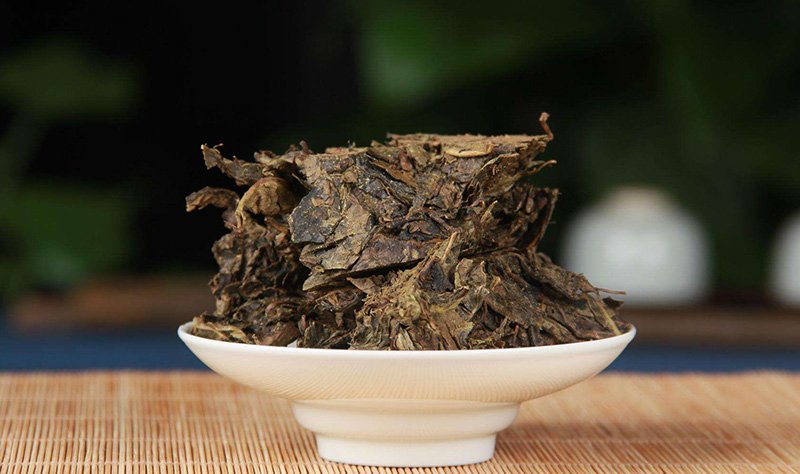
Processing Methods
Dark tea processing is divided into primary and further processing. The key step, “piling,” happened in the primary process. Piling makes dark tea distinguished from other types of tea.
Dark tea was born in an accident. To mass-produce it, tea masters did lots of tests to imitate the worse natural environment and developed the piling process finally. After piling, the tea flavor will close to the aged raw tea.
Leaves after being fixating and rolling, will be placed on the ground of the warehouse. No sunshine in the house, the temperature is controlled at over 25℃. During the period, the tea masters will water the tea piles at set intervals and keep the air humidity at about 85%.
Under the wet and high-temperature environment, inside the tea piles, various amazing chemical reactions are happening. The residual active enzyme will make the tea polyphenol in leaf oxidated and change into other substances. These transformations low down the bitter taste a lot, and the increase of tea polysaccharide bring more sweetness. Some microorganisms also take part in the fermentation to help change better. Besides, the leaves’ color will turn yellow due to the chlorophyll being broken, finally to dark.
Different types of dark teas also got a little different on the piling processing. Like in the Liu Bao tea case, tea masters will artificially add some microorganisms into the piles to speed up the fermentation and create a unique flavor. And to Fuzhuan brick tea, there also has processing called “create flowers,” which makes more golden flowers develop inside the bricks. Each dark tea piling time also cost different; some only need dozens of hours, and some require a few days.
Dark tea has another characteristic that it is typically sold in a compressed style.
The leaves after primary processing are called dark rough tea. Tea masters will screen, classify, and blending them according to the quality. The dark rough tea will be steaming to re-soft again, then compressing into tea bricks, cakes, or any other shapes by a machine or in a traditional way.
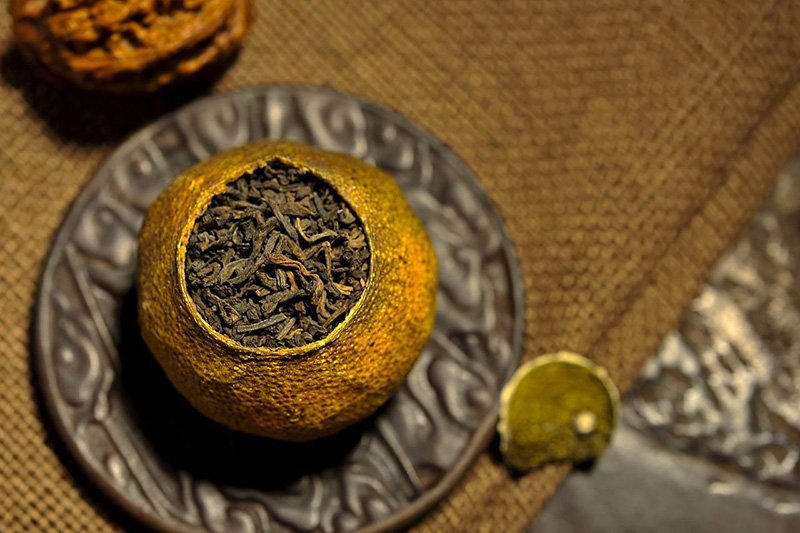
Dark Tea Ingredients
Tea Polysaccharide
Tea Polysaccharide is a kind of acid glycoproteins, which combine with lots of minerals. It is the primary beneficial ingredient of dark tea. Tea polysaccharide develops during the dark tea aging, the longer the time, the more content it gets. And it also the main factor that brings sweetness.
Tea Pigment
The tea pigment in dark tea primary is theaflavin and thearubigins; they are the tea polyphenol conversion products. Thearubigins takes a larger part, so the infusion shows an amber color. Besides, tea polyphenol also the greatest nutriment of tea, which brings lots of benefits to the human body.
Tea Saponin
Tea saponin is a special glycoside compound of tea. Except for the benefits of reducing the cholesterol level and sterilization, it is also widely used in the industry. Besides, tea saponin will make some foam when you are brewing.
Amino acid
Researchers found γ-aminobutyric acid(GABA) in dark tea, a nutriment conversed from glutamic acid. Due to dark tea is post-fermented tea, the inside anoxic environment is comfortable to develop some microorganisms. It is still not sure the GABA is from the dark tea processing or microorganism metabolism.
Caffeine
All the dark tea contains caffeine. Because the source leaves for producing dark tea are old, which has less caffeine than the tender. And during the processing, leaves been bake, lose more caffeine further. So the dark tea caffeine content is low and now easy to cause insomnia. But people who are caffeine sensitive still should take care.
Related Reading: Worry About The Caffeine In Tea? 4 Tips For You!
Mineral Substance
The ripe leaves and stems are rich in minerals, so dark tea content are more than other types. Such as Mn, Se, Zn, Na, Mg, which could supply what the human body needs.
Microorganism
The microorganisms inside dark tea came from the piling processing. Primary are molds, saccharomycetes, lactic acid bacteria, actinomycetes, etc. With their help, the leaves will develop a unique flavor and any other beneficial substances.
There are some golden spots inside the Fuzhuan brick tea called golden flowers. They are a kind of Eurotium cristatum. The “golden flowers” are greatly believed to help the human body, and the amount decides the Fuzhuan tea quality. Other types of dark tea also may develop golden flowers after a long time of aging. Still, Fuzhuan brick tea must already get them before the sale.
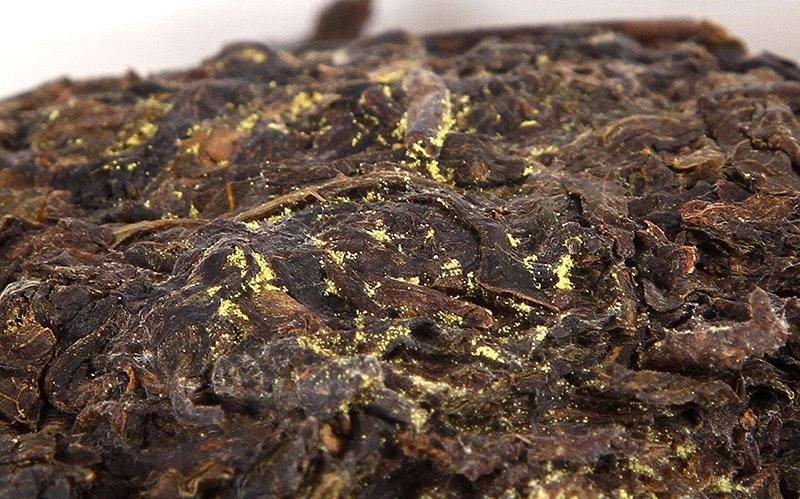
Dark Tea Benefits
Weight Loss
Ever there was an experiment with the people outside of Asia. Under the situation of no dietary restriction, the subjects’ fat level was obviously reduced after consuming a period time of dark tea.
Hypolipidemic
If got high content of fat in the blood, they are easy to heap up the vessel wall and cause atherosis and thrombose. Dark tea contains vast tea polysaccharide, which can reduce the blood fat level, and improve cholesterol metabolism by the liver, prevent cardiovascular diseases. Chinese love dark tea most beyond this reason.
Hypotensive
The theanine contained in dark tea can inhibit the blood pressure from growing by activating the dopaminergic neuron. Simultaneously, the caffeine and tea polyphenol of dark tea can also relax the vessels and low down the blood press.
Help Digestion
Caffeine can increase gastric juice secretion to promote appetite and help digestion. The other dark tea ingredients also can encourage the growth of beneficial bacterias in the intestines and stomach, thus improve the digestive system.
Anti-inflammatory And Cancer
Tea pigment is the product of the action of tea polyphenols and other microorganisms. Except for giving the beautiful infusion color, it also has an excellent anti-inflammatory effect. In collaboration with the tea saponin, it can effectively douse inflammation in the body. And tea polyphenols themselves are a great anti-inflammatory. Under their help can reduce the cancer risk.
Antioxidant
Tea polyphenols are made up of various excellent antioxidants, such as catechin, tea pigment, and flavonoids. They can effectively remove the free radical, slow down the cell’s aging, and reduce skin wrinkles.
Manage Diabetes
Type 2 diabetes is regarded as a close relationship with obesity. Tea polysaccharide in dark tea can stimulate insulin secretion, low down the blood sugar content. Combine with the hypolipidemic effect, it can reduce the risk of getting diabetes. People with diabetes also can manage the disease by drinking dark tea.
Dark Tea Varieties
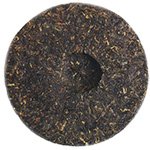
Pu-erh Tea(Ripe)
The Pu-erh tea from Yunnan may be the most famous dark tea. Although Yunnan is also a border region, it is very suitable for tea tree cultivation. Pu-erh tea is made from the Yunnan Large-leaf tea tree, which has a close relationship to the Assam type, makes the flavor so strong.
Ripe Pu-erh tea not only sells in the common bricks and cakes style but any other funny shape like Tuo Cha and Mushroom Cha. Some tea masters also like to put the Pu-erh into a dried tangerine peel to make the leaves full of fruity aroma.
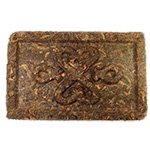
Anhua Dark tea
Anhua dark tea is from Hunan, also made from the large-leaf tea trees. In the old times, Anhua dark tea got the largest market share of border-selling tea by its excellent quality and became the hottest smuggle tea. The most traditional package is compressing the leaves in a long strip type bamboo cane container to make them into Qian Liang Cha. When drinking, you need a hacksaw to take the leaves from Qian Liang Cha.
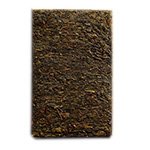
Fuzhuan Brick Tea
Fuzhuan brick tea originated in Jingyang, Shaanxi. Tea trees are not grown there, so the source leaves are from other regions; most are Anhua dark rough tea.
The most significant characteristic of Fuzhuan brick tea is full of tiny golden flowers inside. This is a kind of fungus which regarded as beneficial to the human body. The golden flowers need a certain space to grow, so the brick would not be compressed too tight; you can prise the brick apart with your hands easily.
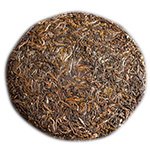
Tibetan Tea
Tibetan tea(also called Zang Cha) is produced in Yaan, Sichuan, and primarily provide to the Tibetan. In the past, it’s the main border-selling tea, used for exchange horses from Tibetan folks. Tibetan tea solved the digestive problems of Tibetan and ever used as a currency.
Zang Cha is an absolutely essential part of the Chinese border regions people’s life. The most traditional drinking way is to make it into butter tea; Dave Asprey ever inspired by it and invented Bulletproof Coffee. Tibetan take butter tea as a daily diet and serving guests; the monks also use it to serve their god.
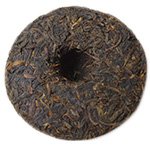
Liu Bao Tea
Liu Bao tea is originated in Guangxi. Just like Pu-erh tea, it is divided into raw tea and ripe tea; it got a special betelnut aroma. Liu Bao tea also one of the border-selling tea, but the primary market is in Southeast Asia.
In the past times, many Cantonese came to Southeast Asia as labor, and they were suffering from diarrhea caused by being not acclimatized. Until they drank the Liu Bao tea from the motherland, not only to cure the disease but also to relieve the homesickness. Later Liu Bao tea became popular in Southeast Asia, and the local people called it “Tang Cha.”
How To Make Dark Tea
Traditional Way
- Prepare moderate dark tea. Typically, we will use a small knife to help take the leaves from the tea cake center or pry from the brick sides;
- Preheat the teawares. Gaiwan and porcelain teapots are the most common choice, and the purple sand teaware may be better;
- Put the leaves into the teapot, add 100℃ hot water in, steep for about 10 seconds, then pour out the wastewater;
- Repeat step 3. Because dark tea has been a long time aging, maybe with some dust. And pre-brew also can make the compressed leaves getting unfold, more easy making infusion at the following;
- Fill hot water in again, steep for about 1-2 minutes;
- Pour the infusion into a fair cup to equal the concentration;
- Enjoy;
Cooking Tea
To dark tea, making it in a cooking way maybe the best; it can fully extract the flavor.
- Prepare a cast iron teapot, add water to 3/5, then heat to boil;
- Put the leaves in, cooking for 5-10 minutes;
- Enjoy;
Or you can
- Pour the cooked infusion into a pot through a colander;
- Keep heating for 2 minutes, then add moderate milk and butter, and stir it until all ingredients are mixed;
- Stop heating, add some salt, stir;
- Enjoy;
Dark Tea Aging Methods
Aging is the soul of dark tea. During long-term storage, the microorganisms inside dark tea will promote the leaves to keep fermenting and make the flavor change and improve continually. The herbaceous taste will get lost. The fruity, medicine, and ripe cereal aroma will gradually appear; the taste also turns mellow from astringency.
Basically, all the dark teas have been a certain period aging by the tea merchants before sales, several months or years. So when you are buying the dark tea back and already can get the aged taste.
If you want to let the dark tea keep aging to improve the flavor and value, it’s also simple. You just need to prepare a non-smell container(how to choose the proper tea storage container); a cardboard box seems to be good. Typically, dark tea got a ricepaper packing, and it can do a great job on the dampproof. After you repurchase the tea, you need to check the ricepaper packing, whether already damp.
Something different in the storage environment between dark tea and other teas. It needs the microorganisms to help keep fermenting, so the storing place should be ventilated, providing enough air to keep the microorganisms alive. Every 3-4 months, you need to open the container once to let the air change. Besides, the place also should be dark.
About the temperature and humidity, unless you live in an extreme climate, all you need is just to keep it dry and at an average temperature. There is no need to store the dark tea in a fridge because the microorganisms have higher activity at the normal temperature. Some tea lovers may pick a special aging container with humidity and temperature controller. But to a beginner, it will be easy to make the dark tea getting mold or losing flavor by the wrong set.
Reference
- Reduction of body fat and improved lipid profile associated with daily consumption of a Puer tea extract in a hyperlipidemic population: a randomized placebo-controlled trial;
- Polyphenol- and Caffeine-Rich Postfermented Pu-erh Tea Improves Diet-Induced Metabolic Syndrome by Remodeling Intestinal Homeostasis in Mice;
- The Microbiome and Metabolites in Fermented Pu-erh Tea as Revealed by High-Throughput Sequencing and Quantitative Multiplex Metabolite Analysis;
- Pu-erh Tea Protects the Nervous System by Inhibiting the Expression of Metabotropic Glutamate Receptor 5;
- Tea Polysaccharides as Potential Therapeutic Options for Metabolic Diseases;